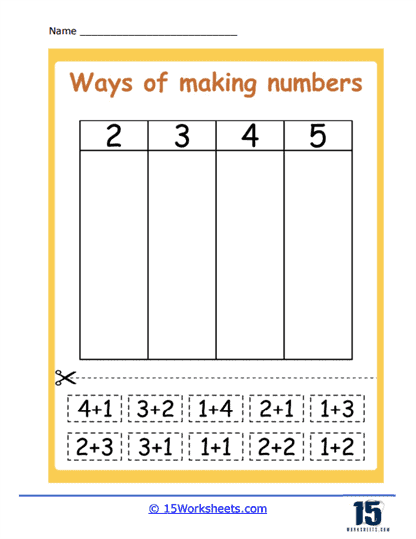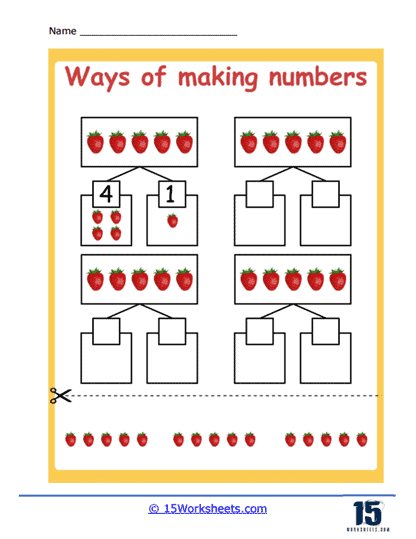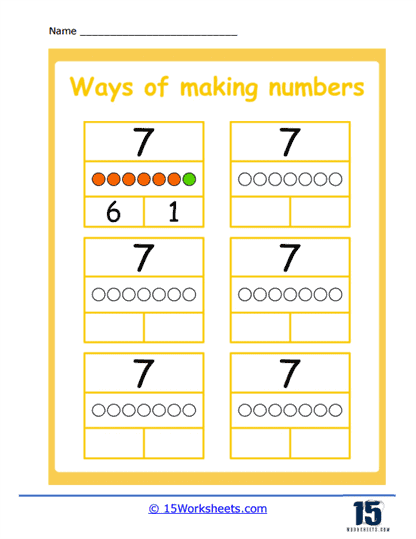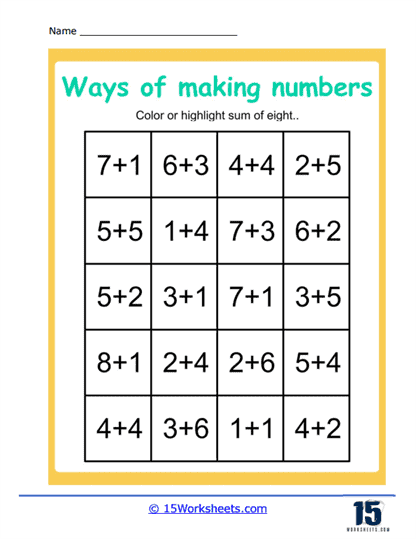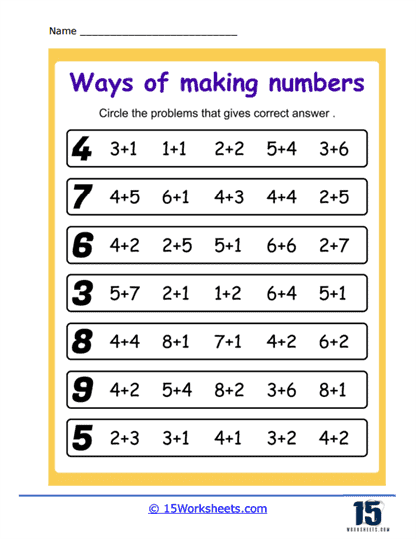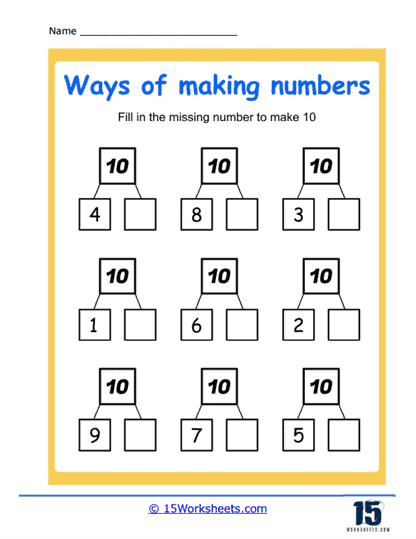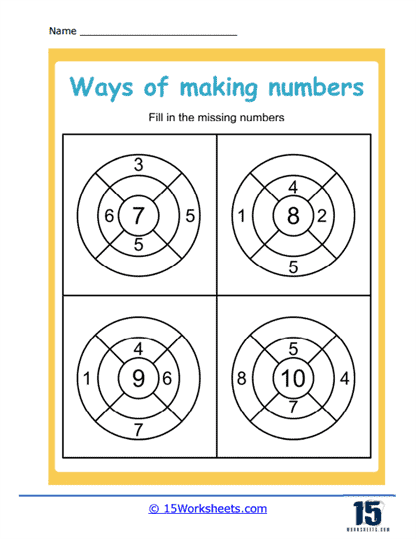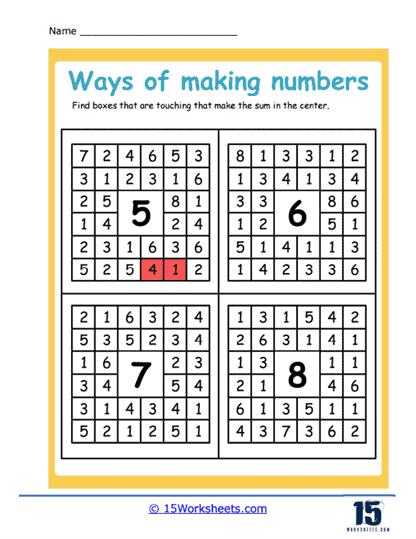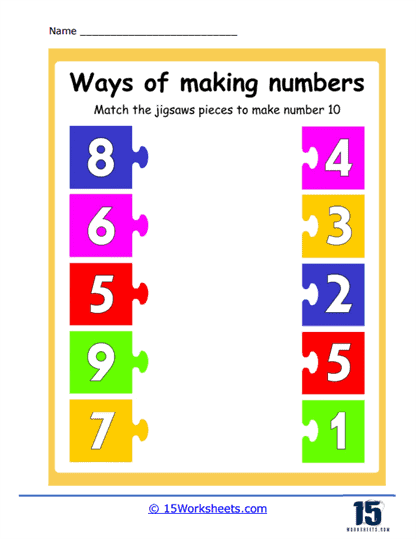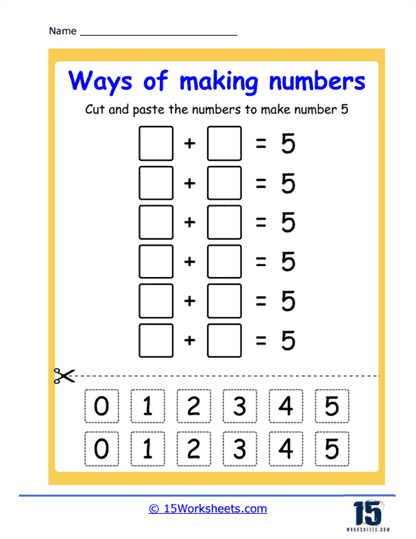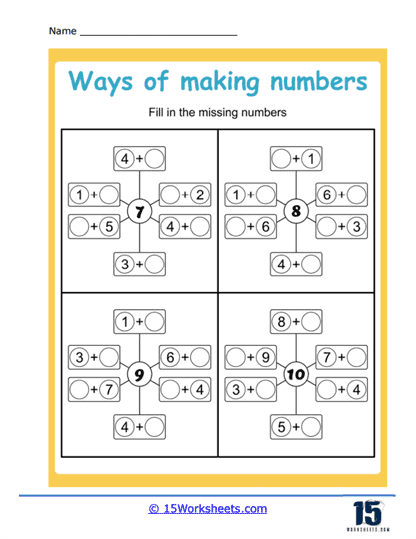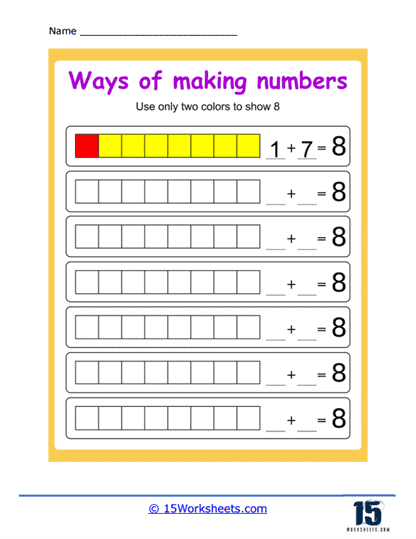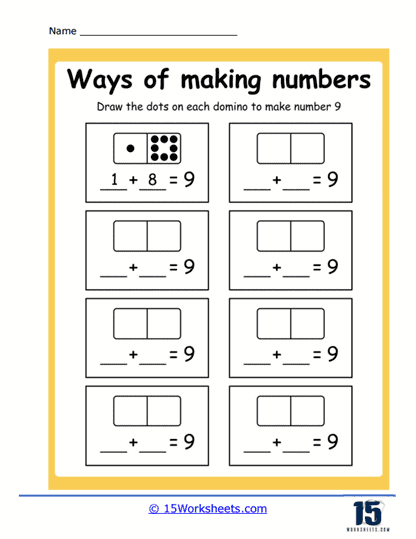Ways to Make a Number Worksheets
About These 15 Worksheets
These worksheets work on the concept of addition and the many combinations of numbers that can make up another number. These worksheets can be especially beneficial for younger students who are just starting to learn about addition. The premise of these worksheets is simple. A specific “target” number is provided, and students are tasked with finding different pairs of numbers that, when added together, result in the target number.
For example, if the target number is 5, students might write:
1 + 4 = 5
2 + 3 = 5
0 + 5 = 5
5 + 0 = 5
3 + 2 = 5
4 + 1 = 5
They help to reinforce the idea of the commutative property of addition (that you can switch the order of numbers in an addition problem and get the same sum). They also emphasize the flexibility of numbers and can help to build a strong foundational understanding of addition.
Teachers may expand on this concept by introducing the use of manipulatives such as beads, blocks, or counters to provide a visual and tactile way for students to explore the different ways to make a number. It can also be presented as a fun challenge or game, which can make the learning process more engaging for students.
What is Number Sense in Math?
Number sense is a term that describes a cluster of ideas related to understanding numbers, operations, and how they relate to each other. It involves a variety of skills, including:
Number Relationships
This includes recognizing numbers, understanding their value, and knowing what they represent (for example, that the number 5 can represent five apples, five cars, five days, etc.). This refers to understanding how numbers relate to each other, such as knowing that 5 is more than 3 and less than 7, or recognizing that 2 is half of 4. Recognizing patterns in numbers, such as even and odd numbers or multiples of a certain number, is also part of number sense.
Operations and Estimation
Understanding the effects of operations like addition, subtraction, multiplication, and division is another part of number sense. For example, knowing that adding increases a number’s value, while subtracting decreases it. Number sense also involves being able to make reasonable estimates. This might include estimating the result of a mathematical operation or estimating measurements or quantities in everyday life. Being able to perform simple calculations in your head is another aspect of number sense.
What Are The Properties of Addition?
The properties of addition describe the rules that govern how numbers behave when they are added together. These properties are consistent across all real numbers and are fundamental to understanding and performing mathematical operations. The three main properties of addition are:
Commutative Property – This property states that changing the order of the addends does not change the sum. If you have two numbers, a and b, the sum of a + b is the same as the sum of b + a. For example, 3 + 5 = 8 and 5 + 3 = 8.
Associative Property – This property states that when adding three or more numbers, the way in which the numbers are grouped does not change the sum. If a, b, and c are three numbers, then (a + b) + c equals a + (b + c). For example, (2 + 3) + 4 = 9 and 2 + (3 + 4) = 9.
Identity Property (or Zero Property) – This property states that if you add zero to any number, the sum is that original number. If a is any number, then a + 0 = a. For example, 7 + 0 = 7.


